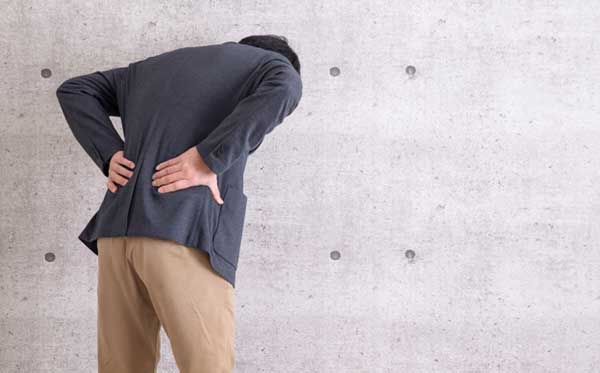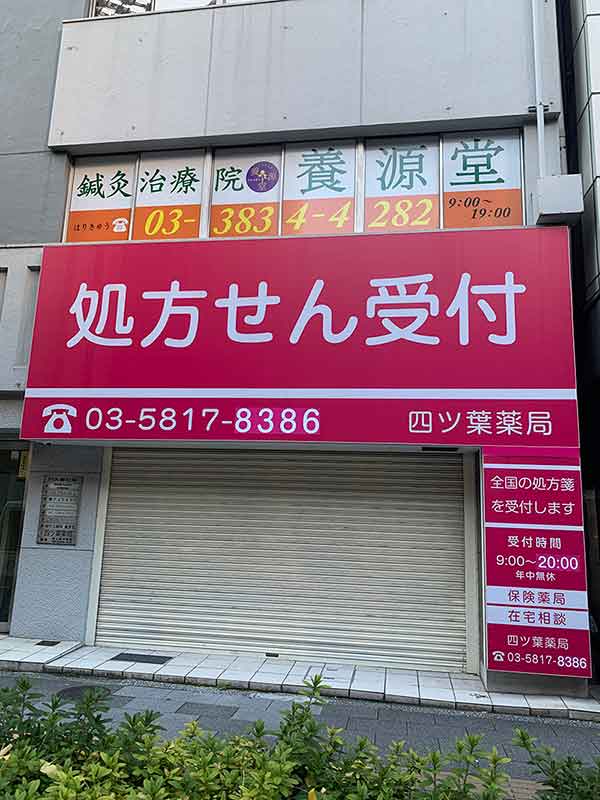Back Pain
According to a survey by the Ministry of Health, back pain ranks first in men and second in women among diseases and injuries with subjective symptoms.
Many important tissues and nerves pass through the back of the body, so it is easy to feel pain.
There are two types of low back pain: specific low back pain and non-specific low back pain. Specific back pain is caused by some disease, such as directly affect the lumbar spine which is a herniated disc or lumbar spinal stenosis or those that affect nerves rather than the lumbar spine which is tumors and urinary calculi.
Specific low back pain can be found by X-ray or MRI examination. You have to see a doctor, if the pain persists or your condition do not improve, because a serious illness may be the cause.
Unexplained
Low Back Pain

Non-specific back pain accounts for 85% of back pain, but it’s not possible to determine what is causing the pain. For example, being in a posture that puts a burden on the lower back for a long time, lack of exercise, stress, etc., all contribute to lower back pain.
It is difficult to clear the cause of non-specific low back pain because it cannot be seen even with imaging tests such as X-rays and MRIs. Furthermore, unless the cause of non-specific low back pain is remedied, the nerves will continue to be under constant stress, and may become chronic.
Cause / Symptom
The main diseases that cause back pain are:
- Lumbar sprain (strained back)
- It’s strained back. Acute low back pain caused by injuries to the muscles and joints of the back. The pain of severity varies depends on each, but it can also make you impossible to move.
- Spinal disc herniation
- There are symptoms of pain and numbness when the intervertebral disc is damaged or the nucleus pulposus inside it protrudes. There are many people who have disc herniation even if they have no subjective symptoms, so when you lift something heavy, try to take a posture that does not put a strain on the disc.
- Spinal canal stenosis
- It is a disease that causes pain and numbness because deformation of the spinal canal due to bone deformation and the progression of intervertebral disc herniation. It may make you intermittent claudication which is difficult to walk and I cannot walk without rest.
- Lumbar spondylosis
- Excessive strain on the lower back deforms the hip bone, causing intense pain. In order to avoid pain, you may be in a strange posture, which may exacerbate the disc herniation.
- Spondylolisthesis
- It is low back pain and numbness caused by the separated lumbar vertebrae caused by injuring the lumbar vertebrae in a teenager with a flexible body. You begin to get the pain when the joint separates, so treatment at this time can prevent progression to lumbar spondylolisthesis.
- Scoliosis
- This low back pain is caused by a curvature of the spine. The disease is more common in childhood and women more than men. If the symptoms worsen, it may affect not only back pain but also cardiopulmonary function.
- Spinal compression fracture
- This is a condition in which the spine is fractured due to strong force applied from above and below. It’s painful because the bone was broken, and the disease is also strongly associated with osteoporosis. As osteoporosis progresses, the risk of vertebral fractures increases, even without strong force, so elderly people, especially women, need to be careful.
- Sacroiliitis
- The sacroiliac joint is a joint made up of the pelvis and the sacrum. Pain is caused by repetitive strain on the sacroiliac joint. The sacroiliac joint is placed in the hip, the pain spreads to the hip. Women need to be especially careful because it is a disease that is easy to get right after childbirth.
- Pyelonephritis
- This low back pain caused by an inflamed kidney because of an infection. When viruses and bacteria reach the kidneys, they can cause inflammation in men and women of all ages. If you feel back pain within a week or two after catching a cold, you may have it.
- Kidney stone
- It’s urinary calculi. This is low back pain when stones produced in the kidneys are expelled from the body. If you have severe back pain and blood in your urine, be sure to see a doctor. If the stone remains even after the pain subsides, it may worsen to kidney dysfunction.
These are just an example, so don’t neglect back pain just because there is no your symptoms in them.




